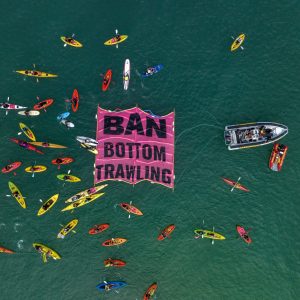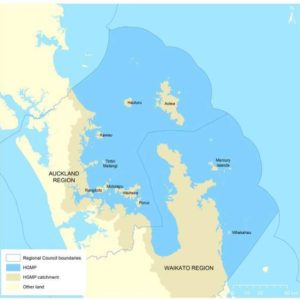We need to stop killing so much sea life.
What does a seafloor look like after decades of bottom trawling? It resembles a muddy, barren landscape unable to support the rich and diverse marine life it once harboured. So fish must go elsewhere to find food. But what if there is nowhere else to find food?
People have been trying to have trawling banned from the Hauraki Gulf for over 100 years. For a decade LegaSea has been advocating the need to ban destructive fishing methods from coastal waters. The main offenders are bottom trawling, Danish seining and dredging.
These methods have a common impact – they harm the seafloor. Bottom trawling and Danish seining involve dragging heavy nets or ropes across the ocean floor. And until the recent emergency closure, the Victorian Box Dredge was used to harvest scallops.
The consistent use of mobile, bottom-contact fishing methods has left a trail of devastation in its wake, destroying shelter, food and ecosystems that used to cover the Hauraki Gulf’s seafloor.
We trusted the Government would listen to the 84% of New Zealanders who wanted destructive fishing methods removed from the Hauraki Gulf. No. Fisheries New Zealand’s recent proposals to create ‘trawl corridors’ would allow destructive fishing to continue. Their proposals simply do not meet the environmental standards expected today.
The devastation extends beyond the Gulf.
With no planned reduction in catch limits, Bream Bay, Coromandel, and the Bay of Plenty will likely see more trawlers in their waters as they shift out of the Hauraki Gulf.
In the midst of ‘trawl corridor’ chaos, the Department of Conservation was consulting on new legislation to create 19 new Marine Protected Areas (MPAs) in the Hauraki Gulf. The environment is deeply interconnected, making it difficult for anyone to consider the merits of the trawl corridors without knowing what areas may be closed to fishing.
You can’t tell us that two of the most important processes to happen in the Hauraki Gulf occurring simultaneously during a general election is not a coincidence. The significance of these matters was out-shadowed by election fever, avoiding the attention of the public and media.
LegaSea and the New Zealand Sport Fishing Council developed submissions in response to the trawl corridor and MPA proposals. We urged decision-makers to take a holistic approach, combining fisheries management and marine protection.
We are promoting an alternative called Option Zero, seeking a ban of all destructive fishing methods in the Marine Park. We also recommend designating the Hauraki Gulf as a Type 2 MPA allowing for 100% seafloor protection from bottom trawling, Danish seining and dredging under the new proposed marine protection legislation.
On the west coast of the North Island, we can see the environmental benefits when trawling is banned in a specified area. Since 2008 the West Coast snapper population has more than doubled in size.
Although we mourn what the Gulf used to be, we need to act now for the sake of our kids. Just imagine how abundant the sea life would become if destructive fishing methods were removed from our inshore waters.





